Desert Night-blooming Cereus (Cereus greggii)
Main sources: Benson, Lyman, 1969, The Cacti of Arizona, Tucson: University of Arizona Press; Early, W.H., 1963, Cacti of the Southwest, Desert Botanical Garden of Arizona Science Bulletin No. 4; Phillips, Steven & Patricia Comus, eds., 2000, A Natural History of the Sonoran Desert, Tucson: Arizona-Sonora Desert Museum Press; Epple, Ann, 1995, A Field Guide to the Plants of Arizona, pp. 157-8, Lew Anne Publishing Co., Mesa AZ; Pizzetti, Mariella, 1985, Simon & Schuster's Guide to Cacti and Succulents, edited by Stanley Schuler, NY: Simon & Schuster.
The cactus genus Cereus [Gr., Lat. "torch"] is characterized in part by its columnar growth patterns, and this particular species shares that feature with its much more prominent relative the Saguaro cactus, though Cereus greggii is quite inconspicuous during most of its lifetime. Its thin, elongate stems are lead-colored, typically 4- to 5-ribbed, and no more than 1/2" in diameter, though they may reach as much as 8 feet in length (usually however sprawling after they reach a foot or two in height, unless supported by surrounding shrubs or trees). They often appear to be dead.
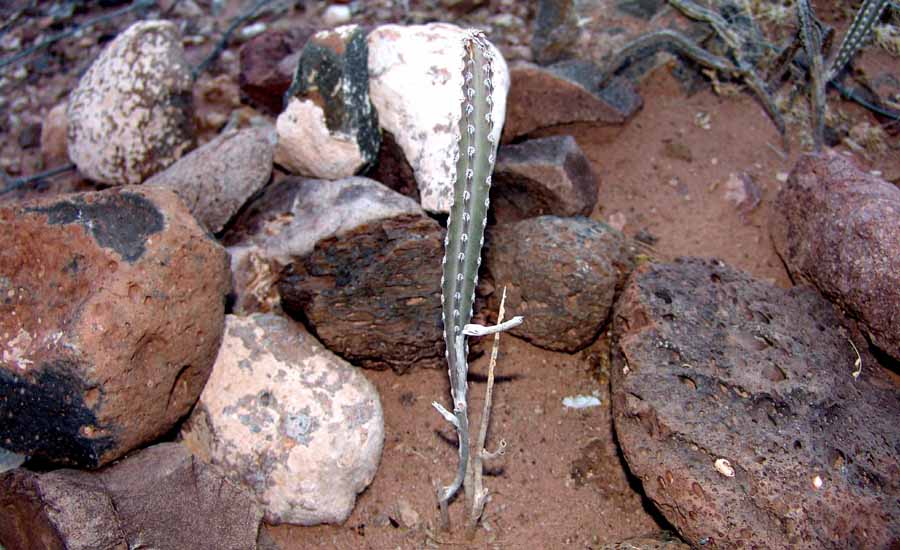
However, after dusk in late June or early July (depending on rains), the plant may erupt with bright-white, pointed-petal flowers, their intoxicating fragrance "carrying as far as 100' and attracting moths and other night-feeding insects" (Epple, p. 168). The banner photo at the top of the page, taken by Saguaro Juniper Associate Jim Flood on the morning of July 7, 2010 on a terrace above lower Hot Springs Canyon, illustrates the pattern. On the evening of July 6, Jim caught this plant with its burgeoning blossoms:
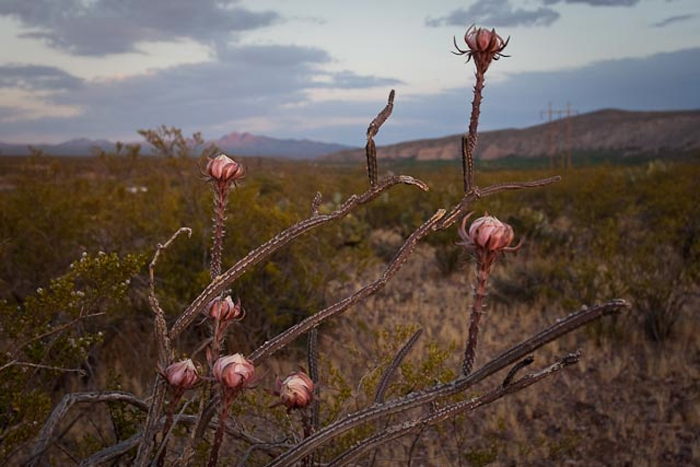
As night wore on, Jim saw the blossoms open:
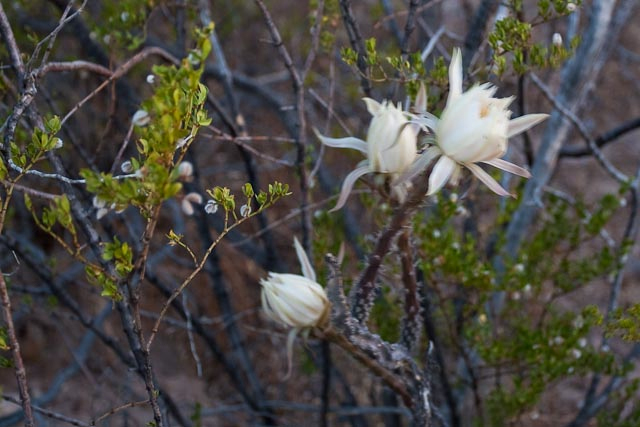
And by morning of the following day, the full blooms persisted:
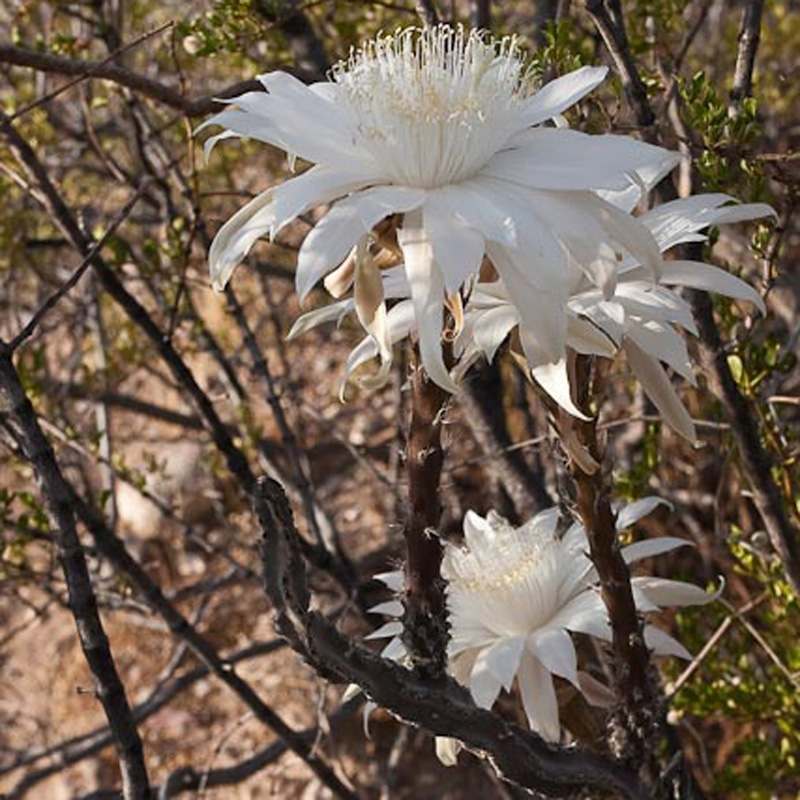
These flowers fade with the rising of the sun, later producing reddish elliptical fruits with short spines.
This cactus is rare in our Saguaro Juniper area. In the ground beneath each plant, a tuberous root may expand to a size approaching 50 pounds in weight, a food resource formerly exploited by Native Americans and early Hispanic settlers living here. Below, in February of 2007 the local Javelina had been seeking out these plants in a terrace along the San Pedro River, to the point where we began to protect them with screens. See below one of these holes dug by these tuber-rooting creatures:
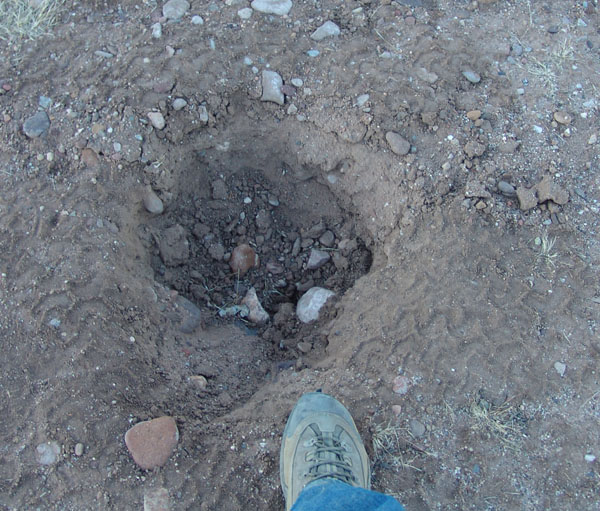
For more images of this plant, see Desert USA image.
